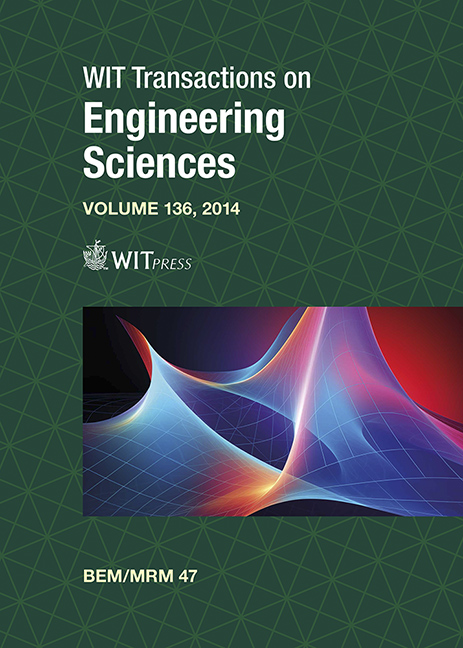MODELLING OF CONCRETE USING THE BOUNDARY ELEMENT METHOD AND HOMOGENISATION TECHNIQUE
Price
Free (open access)
Transaction
Volume
136
Pages
7
Page Range
159 - 165
Published
2024
Paper DOI
10.2495/BE470131
Copyright
Author(s)
MARIA JULIA M. SILVA, CALEB G. PITALUGA, GABRIELA R. FERNANDES, JOSÉ J. C. PITUBA
Abstract
A 2D boundary element method (BEM) is used to simulate the mechanical behaviour of concrete within a multiscale framework considering the concept of representative volume element (RVE). The problem consists of solving the equilibrium problem in terms of displacement fluctuations at meso-scale of the material. For that, numerical analyses are performed using a consistent tangent operator for BEM formulation. A step-by-step analysis is detailed described for the parametric identification of the variables involved in a uniaxial compression test experimentally tested. The Mohr–Coulomb model is adopted to simulate the mortar matrix while elastic behaviour is considered for aggregates. Besides, the microcracking process at interfacial transition zone is modelled by defining additional cohesive-contact finite elements on interfaces between mortar and aggregates. The proposed numerical model shows its capability to perform this kind of analysis comparing with experimental test.
Keywords
multiscale modelling, homogenisation, RVE, boundary elements, concrete





